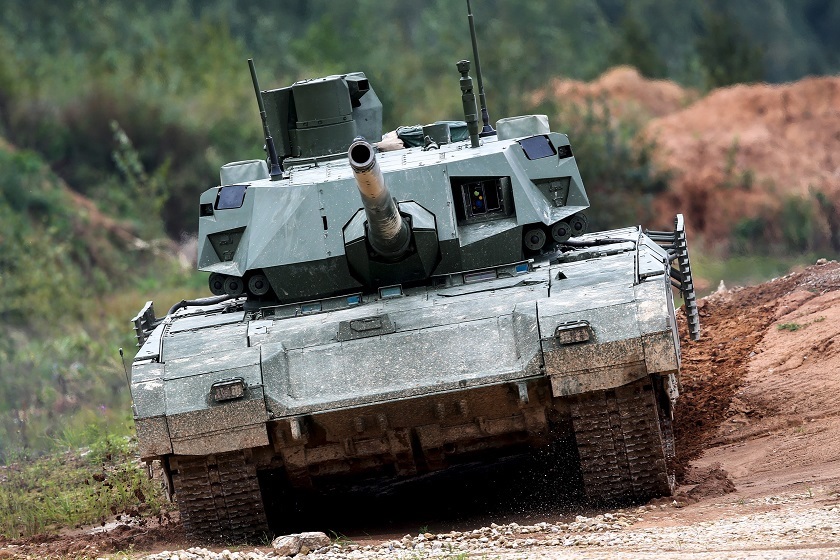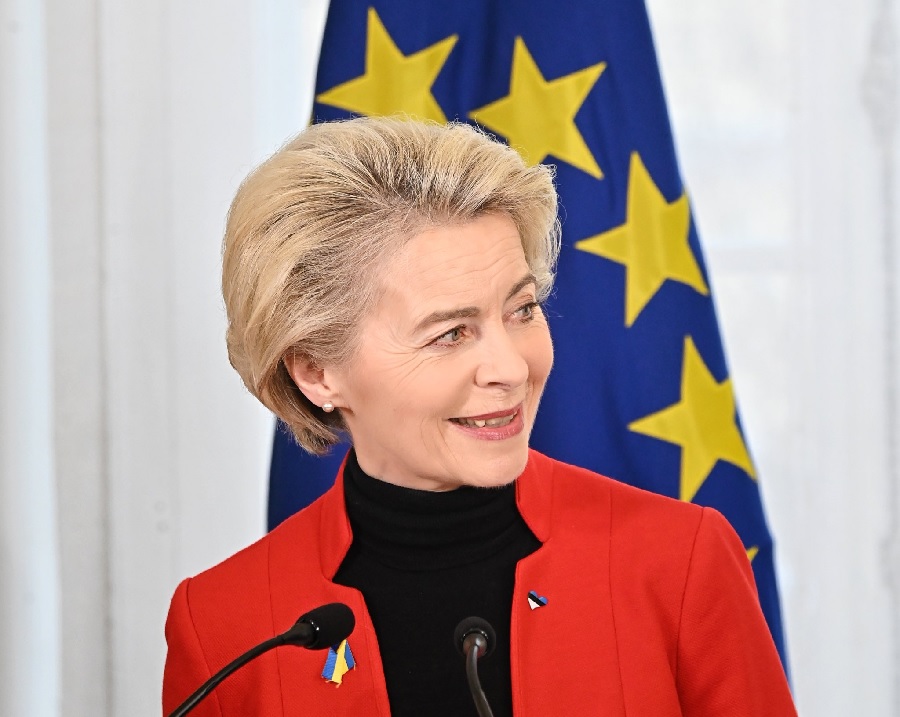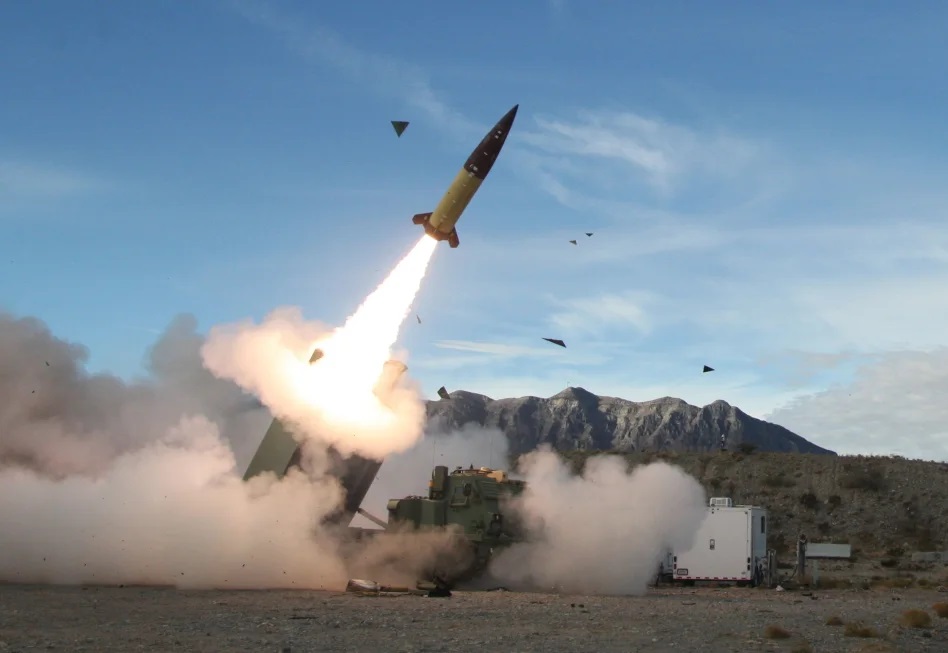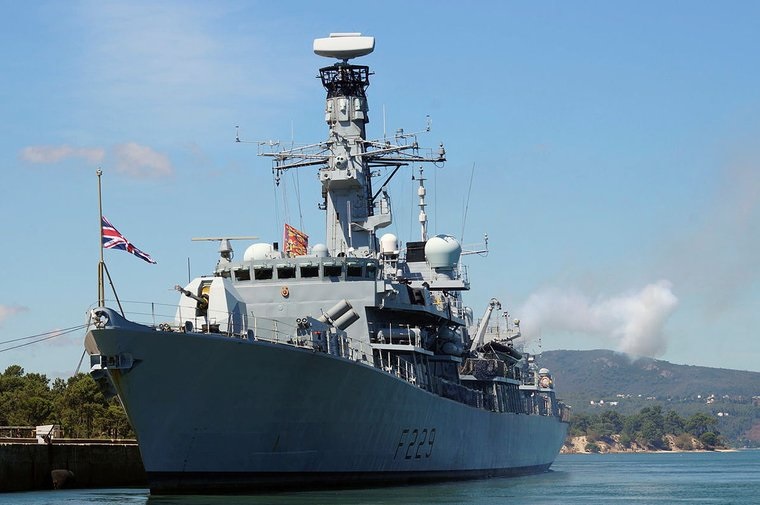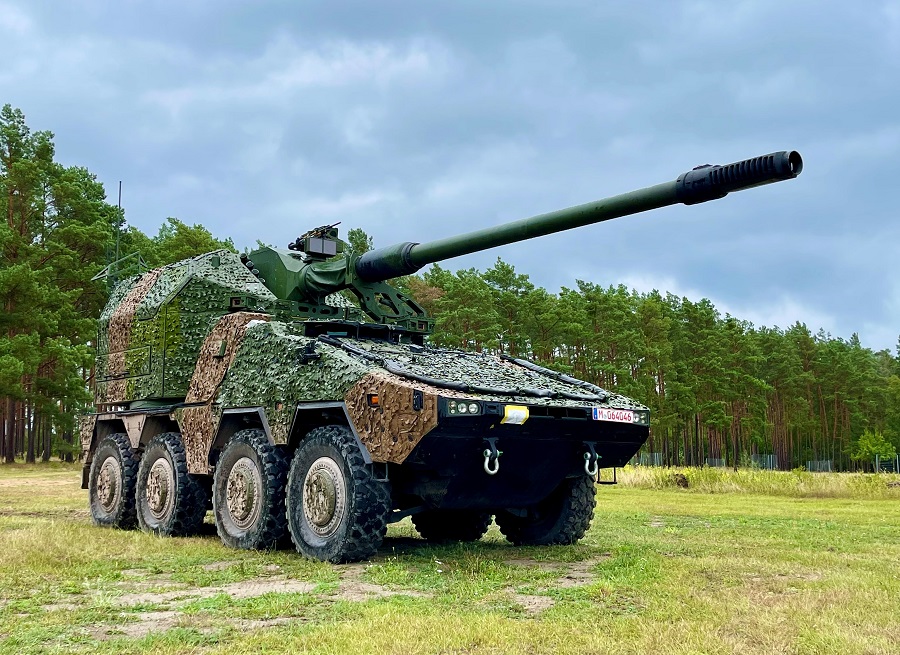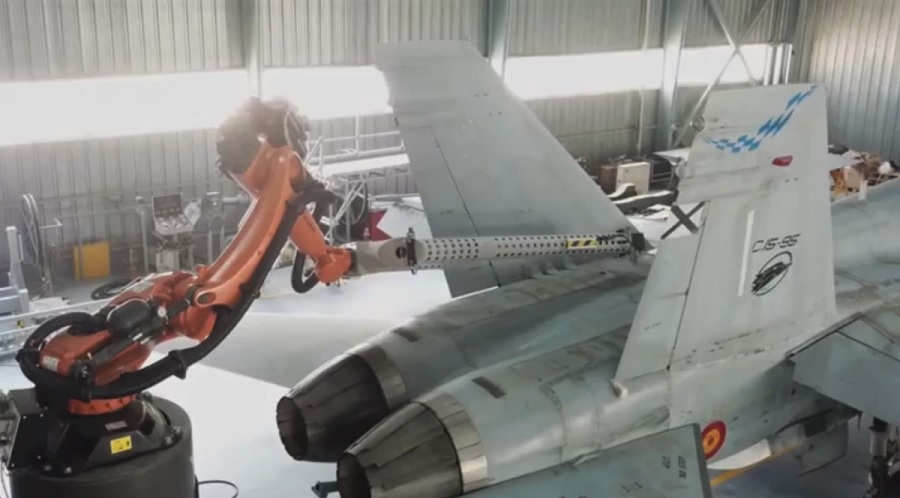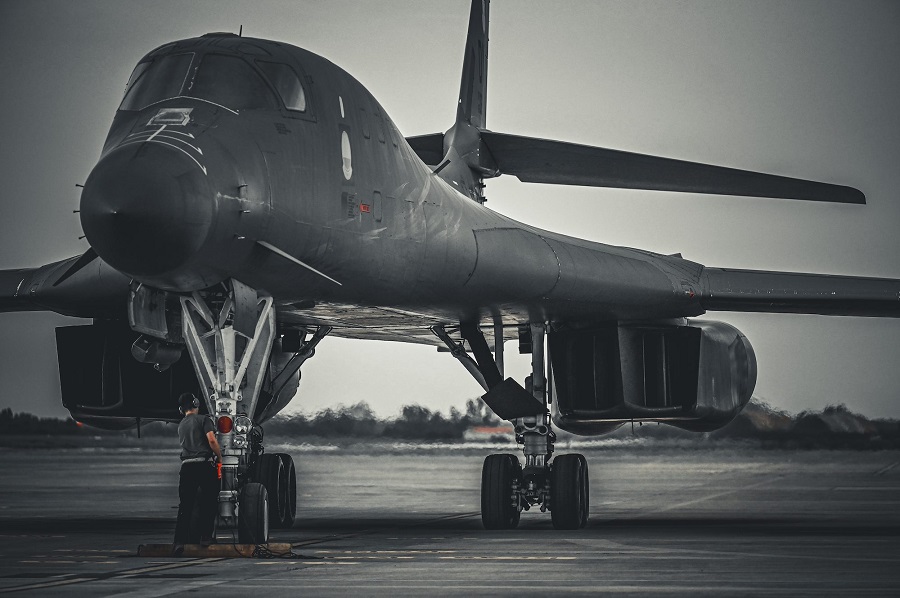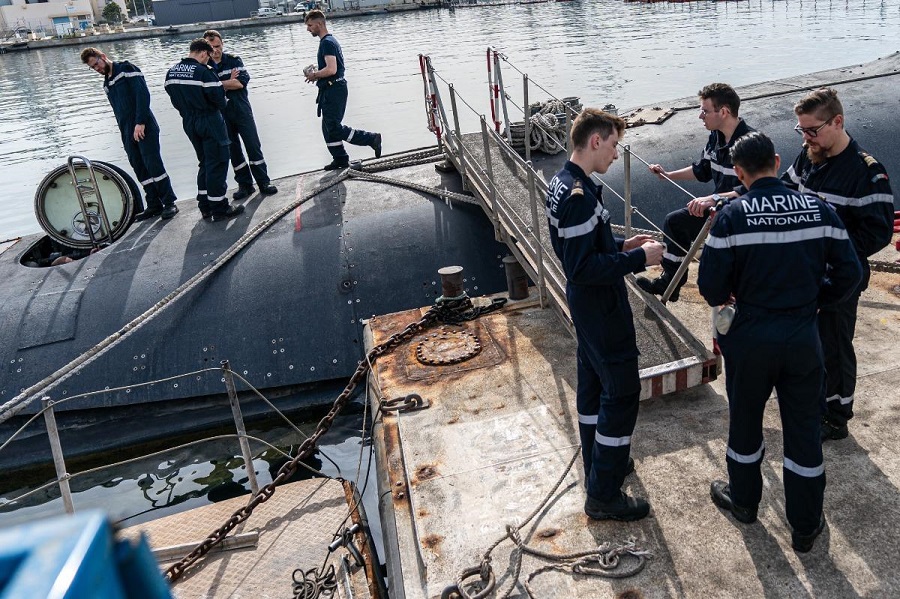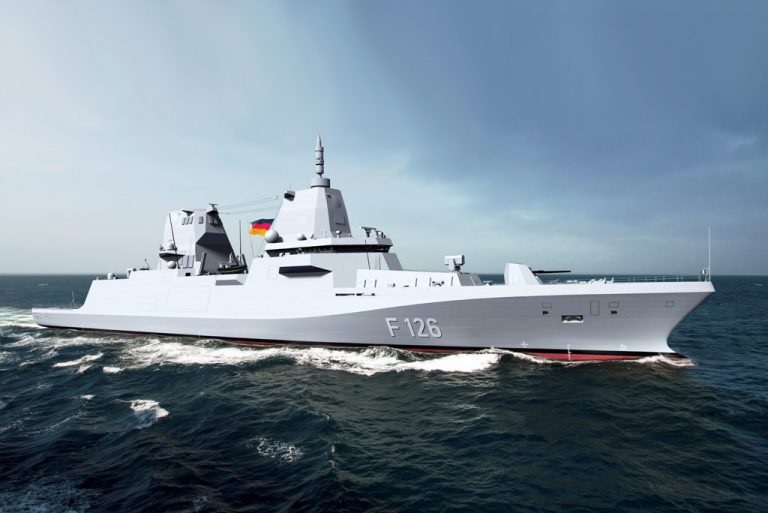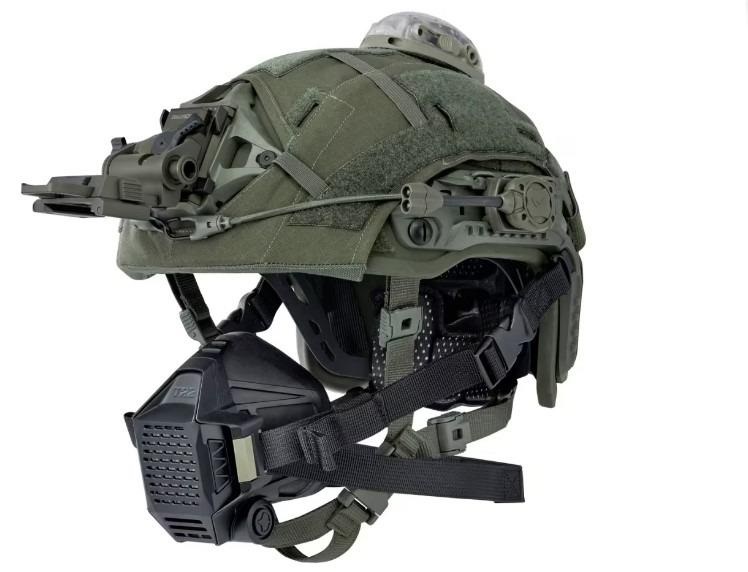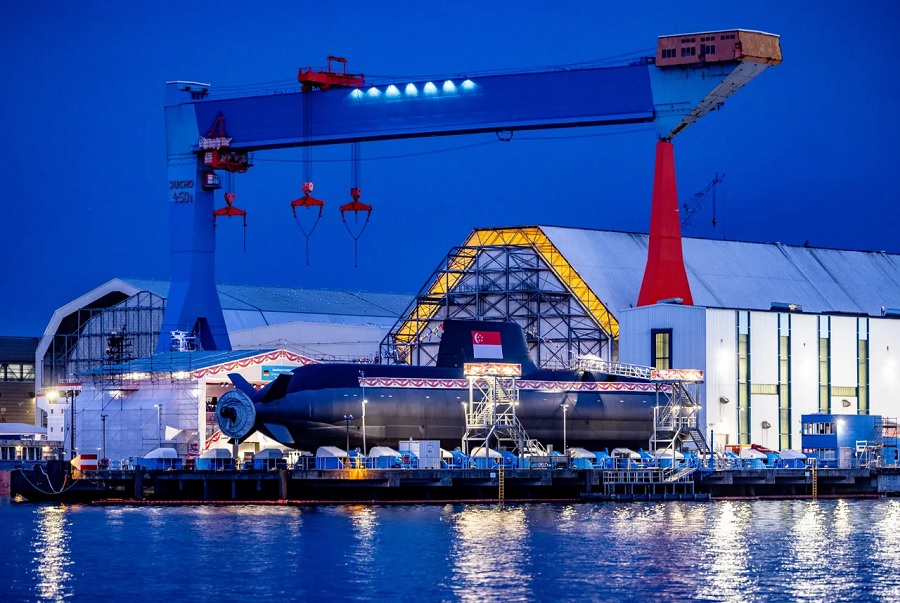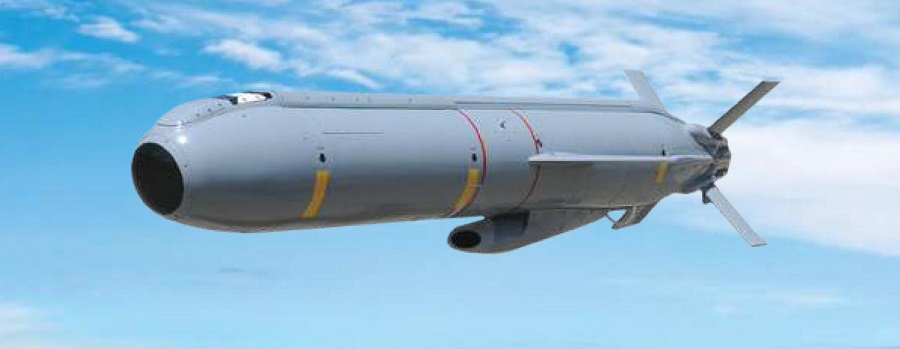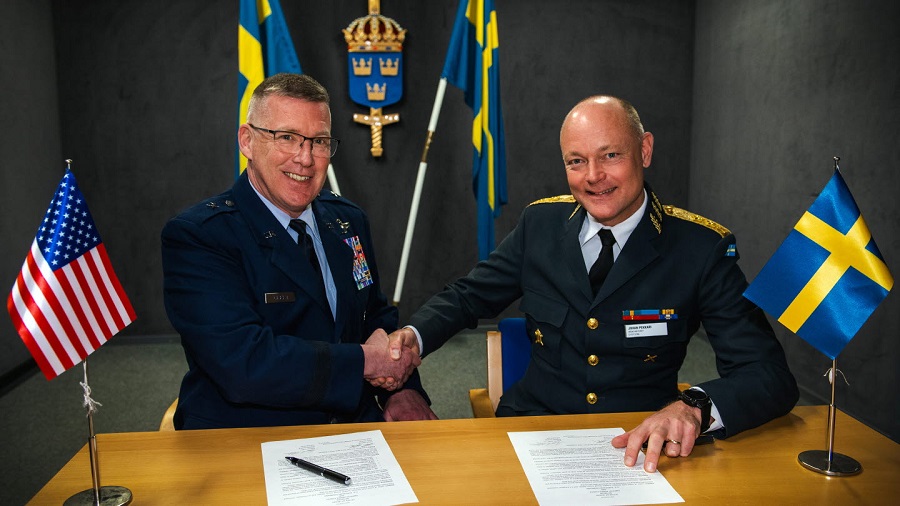Introduction
The T-14 Armata is the Russian Federation’s newest MBT, produced by UralVagonZavod. It is designed on the Armata Universal Combat Platform, which also includes other vehicles such as the T-15 infantry fighting vehicle (IFV) and the T-16 armoured recovery vehicle. It was first shown publicly in 2015 as a next-generation tank and has since been a source of concern for many in NATO due to its technological advancements.
As the T-14 was a long-awaited technological response to the M1 Abrams, NATO needs its own response. The capabilities of the T-14, the M1A2 Abrams, and the Leopard 2 are reviewed here in detail, while an overview of NATO’s other prominent MBTs is partially touched upon. Finally, although decisions and information on the programmes are still scarce, some insights are already made regarding the American and European plans for the tanks of the future.
The T-14 Armata
The T-14 is without a doubt an impressive machine. Its turret is unmanned, which allows the crew of three to be placed lower in an armoured capsule that protects “against enemy sub-caliber armour-piercing shells at an equivalent level exceeding 900 mm of rolled homogeneous armour (RHA), which will increase the ability to survive on the battlefield without the need to significantly increase the weight of the tank”. This provides better mobility and crew safety. Meanwhile, the turret carries a 125 mm 2A82-1M main gun with an automatic loader capable of firing new armour-piercing fin-stabilised discarding sabot (APFSDS) anti-tank rounds and 9K119M ‘Refleks-M’ guided missiles. The latter are said to have a 5 km range and to be capable of attacking even low-flying helicopters and drones. It can also carry machine guns that are remotely controlled. Allegedly, the tank’s main gun has a firing rate of 10 to 12 rounds per minute, with an attack range of up to 8 km. In terms of mobility and manoeuvrability, the T-14 is relatively light, can travel at up to 75–90 km/h, has a 500 km range without refuelling, and can fire in motion. For reference, this is comparable, if not greater, than the latest Leopard 2A7+, which has respective figures of up to 70 km/h and a 450 km range.
The T-14 also carries advanced armour, including a Malachit explosive reactive armour (ERA). However, arguably the most incredible part of this tank is the new Afganit active protection system (APS), which allegedly incorporates a dual—soft kill and hard kill—system; in other words, it can both disrupt guidance systems and kinetically destroy the incoming munition. It allegedly utilises a millimetre-wave radar for detection and is capable of stopping munitions travelling up to 1700 m/s. At the same time, the tank is supposedly coated to reduce infrared and radar detection. Bender (2015) further mentions that “The Armata is also equipped with counter-mine defenses and a suite of high-resolution video cameras.
These cameras would allow the Armata operators to have full 360-degree awareness around the body of the vehicle”. If all the above-mentioned is true, this tank is certainly a formidable challenge to say the least. Especially if rumours of an entirely unmanned version—the Tachanka-B—being in development are true, the T-14 has the potential to revolutionise ground combat in a manner similar to what unmanned drones have done to air warfare.
Weaknesses of the T-14
While the T-14 is certainly an incredible asset on paper, there are many reasons to believe it might be a bit too good to be true. Besides allegedly testing in Syria , the tank has never been deployed in combat, making it difficult to verify Russian claims regarding its capabilities. Many technological aspects have been called into question, including the Afganit hard-kill APS’s capacity to destroy depleted uranium-cored APFSDS projectiles, and the T-14’s ‘invisibility. There might also be a critical problem in its apparent susceptibility to top-attack strikes. There are doubts as to whether the Afganit might be able to defend properly against TOW and FGM-148 Javelin anti-tank munitions. The Armata might not be as indestructible as it first appears.
But the Armata’s biggest weakness seems to be production. Originally, Moscow planned to buy 2,300 T-14s by 2020 and then by 2025; but it seems that the demand now is perhaps around a hundred MBTs—in 2018, Russian Deputy Defense Minister Krivoruchko claimed a purchase of 132 Armata MBTs and IFVs. Half of the issue seems to be the cost: each unit costs around $4 million. While this is cheaper than the M1 Abrams, the Russian economy seems unable to bear the costs after having been badly crippled by the 2014 financial crisis and subsequent Western sanctions following the invasion of Ukraine. The COVID-19 pandemic also seems to have impacted UralVagonZavod’s finances and limited production. While it was originally reported that the army would receive its first Armata vehicles in 2022, these production issues and financial concerns make it difficult to assert how many T-14s have been produced and if Moscow is willing to continue investing into the project. However, interest in the T-14 has clearly diminished since the tank’s first public showing.
It is believed that there are likely production issues outside of state finances as well. Western sanctions seem to be challenging Russia’s capacity to obtain some of the technological components needed, especially for thermal imaging. While Krivoruchko claims these issues have been resolved with, for instance, thermal imagers now being produced domestically, it is difficult to ascertain the current reality of the Russian military industrial complex.
Russia’s other options
The war in Ukraine has certainly not gone as Moscow had expected, especially considering the hundreds of tank casualties they have sustained. Older Russian MBTs, the T-72 and the T-80, have serious design flaws, particularly with the autoloaders.
The autoloader stored ready propellant in a vertical position, with only the tank’s road wheels partially protecting it. RPGs striking the T-80 in the sides above the road wheels were likely to set off the propellant”. This issue has been exploited by Ukrainians, who have repeatedly destroyed these tanks by blowing up the turret off from the rest of the tank. Meanwhile, the T-90M Proryv seems to be an exceptional modernisation of the original T-90. It has many of the improvements from the T-14, including greater precision, better fire control systems, and Refleks guided missiles. Furthermore, it has a modern Relikt ERA and can also carry both soft-kill and hard-kill APS like the Afganit or the hard-kill Arena; although it has typically only been fitted with the soft-kill Shtora-1. The T-90M is an exceptional MBT with enough advancements to be considered a T-14 alternative for Moscow and a serious adversary for NATO and Ukraine.
But if reports of the capturing of one of these units by the Ukrainian military are true, it is likely that the West will soon learn a great deal about Russian technology. If anything, this capture could serve as a justification for not allowing the T-14 to make an appearance in Ukraine. While the casualties sustained in the invasion might be enough for Moscow to justify risking the secrets of the T-90M, Russia might be more apprehensive about losing the Armata. Even without being deployed, the T-14 stands as a nationalistic symbol of military strength and keeps Russia’s opponents concerned about what it can really do.
NATO’s Top Tanks
Much can be assumed, inferred, and predicted about the T-14, but NATO needs to be able to respond to its development. It is important to analyse what NATO has today. While next-generation MBT projects are in development, the Russian Federation already has the Armata. The most prominent MBTs for NATO are the M1 Abrams and the Leopard 2, both of which are heavy, well armoured, and constantly upgraded.
The M1 Abrams
The American M1 Abrams has been in use for decades and has gone through several upgrade packages. The most modern in-use variant is the M1A2 Abrams SEPv3 (Special Enhancement Package), of which there are around 400 available to the US army, although there are thousands more Abrams of previous versions. The SEP configurations of the Abrams improve, among other things, the electronic and digital qualities within the MBT. The tank carries an M256 120 mm main gun, the American version of the Rheinmetall 120 mm L44, with a fire control computer which can fire M829A4 Advanced Kinetic Energy APFSDS rounds. The MBT also carries M1028 120 mm anti-personnel rounds that use tungsten balls as well as M908 High Explosive Obstacle Reduction Tank munitions, both of which are especially useful in urban combat. Furthermore, the Abrams can fire M830A1 High Explosive Anti-Tank-Multi Purpose – Tracer munitions, although this is expected to be replaced by a new XM1147 Advanced Multi-Purpose (AMP) cartridge.
In fact, the AMP round would be able to replace most of the previously mentioned munitions, which would be a great logistical asset for the United States.
In terms of safety, the M1A2 SEPv3 comes with a “new armor package for hull and turret to increase protection against IED threats”. In addition to next-generation depleted uranium armour and Chobham armour, the newer Abrams carry an EPA known as Abrams Reactive Armor Tile, additional ballistic armour, a counter IED electronic warfare system, and even the Israel-made Trophy hard-kill APS. Furthermore, the SEP variants have also now included the Common Remote Operated Weapons System, which allows for machine gun operation without needing to expose tank crew. An even newer SEPv4 has been in development, but information on this is relatively scarce. From what is known, it remains as the SEPv3, but with some notable upgrades. These include better sights, targeting, and an improved firing system for AMP munitions (USOSD, 2020b). It is clear that much attention was paid to the integration of the Trophy system.
But many of these improvements leave a significant problem in terms of mobility. The additional armour, particularly the extremely dense depleted uranium, adds immense weight to the tank. While the T-14 weighs less than 50 tonnes, some M1 Abrams weigh over 70 tonnes and are significantly slower than the Russian MBT. Not only does this extra weight translate into slower speeds, but also logistical and deployment issues. Having to transport a substantial amount of MBTs across the Atlantic Ocean is a major hurdle that the United States has to plan around. But the problem continues in Europe, where “the platform is too heavy for U.S. heavy equipment transports in Europe and must instead be moved using German and British heavy equipment transports”. Russian MBT speed might also leave American tanks at risk of being outmanoeuvred. For these reasons, having depended significantly on additional armour in the past, an APS like Trophy is a much-welcomed asset to the M1 Abrams.
The Leopard 2
The German Leopard 2 is an immensely popular MBT in Europe and elsewhere. There are many variants of it, with some designed for specific countries. The most recent development is the 2A7+ from 2014. This MBT is fitted with a fully stabilised Rheinmetall 120 mm L44 main gun or its longer L55 version; a 130 mm gun has also been in development. The tank can utilise a variety of munitions, including the DM43 and DM53/DM53A1 APFSDS-T rounds, DM11 high explosive and DM12 high explosive anti-tank (HEAT) rounds, as well as Israeli LAHAT guided missiles. The DM53 series is specifically for the longer-range capabilities of L55 barrels. Additionally, it has a remote weapons station on the turret to fire a machine gun or grenade launcher. Overall, the Leopard 2 is a very modern and capable MBT.
The armour specifications of the Leopard 2 vary depending on the model. However, variants from the Leopard 2A5 onwards have a maximum armour thickness of 1,500 mm.
Some of the newer models were given a large wedge-shaped turret to protect against kinetic energy and HEAT attacks, and some have additional armour. For example, the Spanish Leopard 2E has extra armour in the front and on the turret roof, while the Singaporean Leopard 2SG can come with an “additional Advanced Modular Armor Protection (AMAP) composite armour package”. Leopard 2s also have hull armour to protect against IEDs and mines. For additional protection, the Swedish version, the Stridsvagn 122C/D, can also have the French-made GALIX soft-kill APS. The Israeli Trophy APS has also been successfully tested on the Leopard 2: “According to Israeli information, over 90 percent of the incoming projectiles were successfully intercepted and the source of the shot pinpointed” (Geiger & Heiming, 2021). In other words, the Leopard 2 has taken progressive steps to match up with the Armata. It is possible that, soon, the APS’s quality will dictate the tank’s quality.
Unlike the T-14, but similar to the M1 Abrams, the Leopard 2 is on the heavier side. Its weight varies significantly from variant to variant, but it is generally between 60–70 tonnes. It can maintain a speed and travel range similar to that of the Abrams. The Leopard 2 has gradually gained weight and therefore suffers similar disadvantages as the M1 Abrams relative to the Armata. However, being already deployed within Europe, it can deploy and respond quicker against signs of Russian aggression. Additionally, the researching and development of a 130 mm cannon may prove to be a good counter to Russian armour advancements, with Rheinmetall already developing the Panther KF51 MBT which is armed with a 130 mm Future Gun System.
Europe’s Other Major Main Battle Tanks
While the Leopard 2 is the most popular tank in Europe, several European states have developed their own MBTs. The United Kingdom fields the large Challenger 2, France wields the GALIX-protected Leclerc, Italy maintains its Ariete, Poland continues to use the PT-91 Twardy, and Türkiye has recently developed its modern Altay. The Challenger 2 and the PT-91, like the Leopard 2, will soon likely face Russian armour in Ukraine. The Challenger 2 is the United Kingdom’s replacement for the Chieftain and Challenger 1 MBTs. The Challenger 2 is like the Challenger 1, but with obvious improvements and modernisations. It is protected by second-generation Chobham armour and was originally armed with a rifled 120 mm L30A1 gun. Rifled barrels, as opposed to smoothbore guns, are designed so that the projectile spins as it is fired for greater accuracy.
The use of a rifled gun was a problematic choice, as it created ammunition compatibility and interoperability issues with the rest of NATO, as most tanks today utilise smoothbore barrels (Axe, 2019). Rheinmetall has since been awarded a contract to update the Challenger 2 with L55A1 smoothbore guns, which will also be utilised by the Challenger 3 and will allow for greater compatibility with the rest of NATO (Rheinmetall, 2021). Additionally, while this MBT has received other upgrades, it remains a relatively slow tank, reaching a top speed of just 56 km/h on roads. The Challenger 2’s recent technology demonstrator, the Black Night, carries a rifled L30A1 RO Defence 120 mm gun, an upgraded turret, thermal imagers, and other accessories.
Yet it is somehow even slower, maxing out at 40 km/h on roads. However, the Black Night has a significant addition: an Israel-made Iron Fist hard-kill APS (Army Recognition, 2022a). Challengers 2 and 3 are also expected to be augmented with an APS, but the Trophy system instead. The Challenger 2 certainly needs many of the upgrades installed on the Black Night to be at the same technological level as its counterparts elsewhere.
The Challenger 3 has been expected for some years now. It will supposedly have new EPSOM and FARNHAM armour alongside greater digitisation, an APS, and a superior engine. Its Rheinmetall smoothbore barrel will also improve compatibility with NATO. Unfortunately, the tank’s development has been mired by poor management and delays; “The programme has a current in-service date of 2024 (originally planned for 2017) and is some £227 million over budget”. While production seems to have finally begun, this modern MBT will arrive quite late to the competition and has raised questions about the future of British armour.
Meanwhile, France’s Leclerc was, at launch, a modern and expensive MBT. Unlike most NATO MBTs, the Leclerc is armed with an automatic loading system for its 120 mm gun. The Leclerc “boasts an unusual mix of composite, traditional and reactive armor that is slightly more effective against kinetic penetrators fired by other tanks”. It now also carries ERA and titanium armour inserts in addition to its soft-kill GALIX APS. The modernised Leclerc XLR also carries additional armour plating to protect against IEDs and RPGs. The MBT also has modern electronic systems, which provides the crew with positional and navigation information. Additionally, the XLR version has upgraded electronics, digital systems, situational awareness, and an IED jammer. Being relatively light compared to other NATO MBTs, the Leclerc can reach speeds above 70 km/h and has greater fuel efficiency. Overall, the Leclerc has excellent mobility, manoeuvrability, and general performance as seen by its successful combat deployments in the Middle East. Its biggest downside might just be its price tag, although some have criticised the tank’s maintenance issues and a lack of internal upgrade space.
The Italian C1 Ariete has unfortunately fallen quite behind technologically. It wields a 120 mm gun while defending itself with a steel and composite armour and a GALIX smoke grenade system. But while the Ariete’s fire control system might have been modern at the time of its creation, it is now severely dated. There is no thermal sight for the commander, with the thermal sights for the gunner being effective up to 1,500 m, which is considerably lower than the 4,000 m effective resolution of the M1 Abrams. Despite weighing less than other MBTs at slightly over 53 tonnes, it is not particularly faster than its counterparts. Fortunately, an upgraded version of the MBT, the Ariete AMV, has been in development. It will have a better engine, new digital controls, upgraded thermal imagers, and a new armour package. The new upgraded Ariete seems to still be undergoing testing, but this is a much-needed update for the Italian army.
The Polish PT-91 Twardy was designed from the Soviet-era T-72M1. This MBT is fitted with a 125 mm tank gun, a machine gun, an anti-air machine gun, smoke grenades, and was later given an autoloader and improved fire control systems.
Besides its steel and composite armour, it seems to come with Polish-made ERAWA, an upgraded version of ERA that leaves fewer armour gaps. While it has a soft-kill APS system, it is not on par with the Russian Shtora. It is a relatively light tank but can only muster 60 km/h on roads.
There have been several variants made of the PT-91, but the most modern one is the PT-91M2. Some of the improvements are not necessarily new, but are updates of the cannon, ERAWA, etc. For extra protection, there is additional armour to protect against mines, cage armour to protect against RPGs and other explosives, much-improved digital and electronic systems, an upgraded engine, and a new battlefield management system. Overall, the PT-91, despite these modernisations, does not appear to be at the same level as the other modern MBTs of Europe and elsewhere. But with the purchase of the Leopard 2PL, based on the Leopard 2A4, Poland arguably does not need to focus on the PT-91.
Finally, the Turkish Altay is the most recently developed tank on this list. This expensive MBT is intended to replace Türkiye’s much older Leopard 1s, leaving the army with a fleet of three variants of Altays and Leopard 2A4s. The Altay is armed with a 120 mm L55, a remote machine gun, modern fire control systems, and digital and electronic accessories. The MBT will also have modular composite armour and be capable of reaching 65 km/h—however, the specific engine that the final product will contain is still unclear, though it might be a South Korean 1,500 hp engine. Like the T-14 Armata, much is left in mystery regarding this MBT.
The most interesting variant of the Altay, however, seems to be the T3, which has many aspects similar to the T-14. The Altay T3 will allegedly have an unmanned turret and an autoloader. Additionally, a new APS seems to be in development for the Altay T3, known as the AKKOR, which is similar to the Afganit, particularly in its dual capabilities, both soft and hard-kill. Whether this APS will go on all Altay configurations or even be extended to Türkiye’s Leopard 2 fleet remains unclear. It is also difficult to know with certainty how efficient either APS is in practice. Yet it is interesting that the Altay T3, is following a similar development to that of the T-14. Because the performance of the unmanned turret is still unknown, Türkiye perhaps has an advantage in also developing the T1 and T2 versions.
To summarise, all MBTs are more or less highly advanced. The M1A2 Abrams, particularly the SEPv3, has impressive advancements in armour, particularly its new depleted uranium armour. However, its increased weight can cause transportation complications. The Leopard 2 has many excellent variants, with its most modern ones being exceptional tanks. If Germany is able to integrate the 130 mm cannon into the Leopard, then the Leopard may gain a significant advantage over the rest. The British Challenger 2 is a powerful tank, but it leaves much to be desired.
It is quite slow and still uses a rifled barrel, while the rest of NATO uses smoothbore ones. That said, with the development of the Challenger 3 on the way, perhaps this MBT is of little consequence in the long term. The French Leclerc, especially the XLR, is an impressive and modern tank that is on par with other top MBTs. It will be interesting to see if France gives any to the Ukrainian cause. The Italian C1 Ariete is probably the most underwhelming tank on the list, and the AMV variant might not be a sufficient upgrade to compete with its counterparts.
The Polish PT-91 has a similar story, although it does appear to have advanced significantly with its PT-91M2 variant. But, as aforementioned, it is not as cutting-edge as the M1 Abrams or Leopard 2. Finally, the Altay is seemingly a completely modern MBT, although, like the T-14, it lacks any practical exposure. However, the development of the AKKOR might give NATO an APS on par with the Afganit.
To conclude, Europe and the United States certainly have many impressive MBTs. It remains true, however, that the T-14 has certain technological advancements that have not yet been implemented on mainstream MBTs elsewhere. Though NATO is currently developing some competitors as the Altay T3 or Abrams X, the T-14 is already developed and under production, even if it is a limited number. Just as the T-14 was a response to the M1 Abrams, NATO now needs to develop its own response. Türkiye possibly has its answer, but it is less clear how the United States and other big European tank manufacturers will respond.
How Can NATO Respond?
NATO has some impressive MBTs at its disposal. The modernised variants of the aforementioned tanks have truly elongated the lifespan of these vehicles that were designed decades ago. With Moscow having boasted its newest creation, it is up to NATO to bring tank technology further. Improvements in speed and developments in APS, as well as possible experiments into unmanned tanks might be the desired direction. The most eye-catching projects are the American replacement of the M1 Abrams and the European Main Ground Combat System (MGCS).
The American debate
In the early 2000s, the United States army had a modernisation programme worth billions of dollars called Future Combat Systems (FCS). A variety of goals were made, including a broad series of next-generation combat vehicles that would be ready for deployment in the 2030s, yet due to various reasons, the vast majority of the programme was cancelled by 2009. As part of the FCS programme, the XM1202 Mounted Combat System was to be the replacement for the M1 Abrams, but with the cancellation of the FCS programme the United States has been progressively upgrading the Abrams. Yet, while the SEP variants of the MBT have kept it modern, the next-generation push seems to come from the Abrams X prototype model. While technically just a technology demonstrator, it is undeniably advanced and has many of the same technological advantages of the T-14.
Like the Armata, the Abrams X incorporates an unmanned turret with an autoloader, which improves crew safety and lowers the crew count from four to three. It keeps a 120 mm cannon and a remote XM914 chain gun capable of firing programmable airburst rounds for a variety of situations. The tank seems to use cutting-edge infrared sensors and artificial intelligence for targeting purposes. However, the Abrams X brings two major changes in American tank design. The first is a hybrid engine, which drastically improves fuel consumption efficiency and allows the tank to operate in relative silence when stopped.
The second change is long overdue for the Abrams series: immense weight loss. Partly due to the turret being unmanned, the Abrams X weighs just 60 tonnes compared to 80 tonnes of the more recent variants. Logistically, technologically, and crew safety-wise, this MBT is a great step forward. With such advances, perhaps the only thing distinguishing the Abrams X from the T-14 is, if true, the Afganit’s dual capabilities.
But the United States is also pursuing another option: starting fresh with the Decisive Lethality Platform (DLP), which would possibly be an unmanned MBT. Besides this, there are few specifics as to what the DLP would be like and it is not clear if the DLP would be a cheaper replacement to the Abrams. On the one hand, the tank could be lighter as the armour could be reduced due to a lack of a crew. Yet, on the other hand, replacing the crew with digital and remote systems could make the vehicle even more expensive than the newer Abrams models, to mention nothing about the necessary cost in time and money to research and develop a brand-new platform.
Thus, the United States needs to choose between continuing the Abrams by incorporating the advancements of the Abrams X or moving in a different direction with the DLP. The DLP would take considerable time to be developed at an uncertain cost, but if successful could potentially deliver an armoured vehicle that is technologically superior to Russia’s armoured fleet. Yet, as Ferrari and Rahr point out, the situation in Ukraine suggests that the “Army cannot afford another decade-long research program for a new build vehicle”. Meanwhile, the Abrams X already exists and could be put into production in a relatively short period of time. Indeed, it seems beneficial to continue the Abrams line, perhaps so long as it goes on with the advancements of the Abrams X. The Abrams is an exceptional tank, and it might be too soon to abandon its future. Regardless of the choice, a decision is expected to be announced this year.
The European Programme
The European version of the DLP is the MGCS. Currently, the effort is organised by just France and Germany, though it is likely that Italy will join, which would mean that the new MGCS would replace at least the Ariete, Leclerc, and Leopard MBTs. Like the DLP, this will be a very time-consuming venture. Dean reports that the Technology Demonstrator Phase will last until 2024, the Full System Demonstrator Phase until 2028, and the Implementation and Pre-Production phase until 2035, where the armoured vehicles should be fully operational by 2040. Corporate disagreements are already delaying this timeline, particularly regarding who will act as consortium leader.
While much is still unclear regarding the future development of the MGCS, there are some insights. The MGCS changes the nature of tank warfare, as Dean explains: MGCS will not be a single vehicle, rather, it is conceived as a system of systems built around a manned heavy combat vehicle. This core MBT will be teamed and networked with external platforms featuring a variety of capability sets. The team is likely to include both manned and unmanned ground vehicles (UGVs) as well as unmanned aerial vehicles (UAVs).
In addition to being a heavily armed combat vehicle, the MBT will thus serve as a “command centre” for the various peripheral systems.
In other words, an MBT will collaborate with other vehicles to meet the operational capability needs of the future. Just like the Abrams X, it is expected that the MGCS will have a hybrid engine, a relative light weight, an APS, improved sensors and artificial intelligence, and possibly be unmanned. The main gun could be a more traditional 120 mm barrel, or it could be a proposed 130 mm or even 140 mm cannon. In terms of munitions, developments are expected in directed energy weapons and hypersonic projectiles. Other proposed aspects have become a source of continued disagreement and delay, such as France’s desire for a smaller and more flexible vehicle, while Germany prefers a more traditional MBT.
While the T-14 is already here, significant work remains for the MGCS. One solution might be the inclusion of more partners, as Italy and perhaps Norway, Poland, and the United Kingdom are expected to become. A larger, more diverse coalition can spread out the development costs, bring in technological specialisations for individual countries, and arm more European states. Of course, this would likely have the time-consuming downside of having to meet each partner’s strategic needs. In any case, greater political attention and perhaps investment is needed to get this project moving so that it does not end up like the American FCS.
Conclusions
The Russian T-14 Armata is on paper an exceptional and futuristic MBT that effectively responds to the M1 Abrams. Collectively, NATO has a tank fleet that is second to none, but while some tanks like the M1A2 Abrams or the Leopard 2 have been constantly upgraded, others like the C1 Ariete or the PT-91 Twardy leave more to be desired. Still, no NATO army has an MBT with the same advancements as the T-14, although this might change with the production of the Turkish Altay. Meanwhile, as some European states begin to prepare for the next generation of armoured vehicles, the United States must choose between what it knows with the Abrams X or going down a riskier path with the DLP.
Developments in both Europe and the United States will need time. Considering the economic hardship in Russia following the invasion in Ukraine and the lack of production of T-14s, NATO fortunately has the time to reassert itself with more advanced MBTs. But without a truly concerted effort, the DLP and MGCS could fail like the FCS and leave the Russian Federation with an apparent edge in armoured warfare for decades.
Arguably, the United States should continue with the Abrams X while Europe focuses on the MGCS. The latter project should also seek to invite more partners to contribute or even work the initiative into the European Defence Fund. NATO ought to also focus more research on hard-kill or dual capability APS; Turkish developments in this area should not be ignored. At the same time, the parallel evolution of current tanks should not be entirely sidelined, as it is important not to leave a capability gap for the future. With tank losses in Ukraine, it would be unsurprising if Moscow were to focus on Armata vehicle production, especially the T-14, following an end to the conflict. An operational Abrams X would secure technological parity for NATO until the next generation of MBTs arrives.
This article was originally published by Finabel – European Army Interoperability Centre. Click here to visit Finabel’s website.


